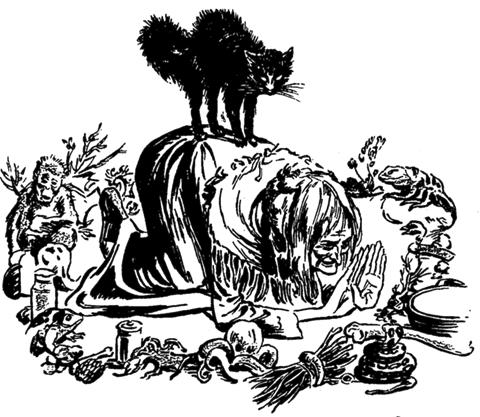“Those who cannot remember the past are condemned to repeat it.”
--George Santayana
This is one of my favorite quotes, but with so many variables happening today, I am finding it difficult to place things into context. As a student of History, I find a certain amount of comfort in being able to recognize or even predict reactions to events. Somehow, if we have been through something before, the familiarity, no matter what the event, helps the event make sense.
My generation went through the Cold War and contemplated, no matter how remotely, the possibility of nuclear annihilation. As a child in the early 60s, we had fallout shelters in my town (and every town) and we still practiced Duck and Cover in school. Things heated up again in the 80s with the arrival of a tough-minded president who stood up to the rhetoric of the Soviet Union. And once again, we were able to imagine loss of life on a massive scale.
There are points in History that can be compared to our current coronavirus pandemic. Some were relatively recent, like the 1918 (H1N1) viral pandemic known as the Spanish Flu. It is estimated that 500 million people were infected by the illness. At least 50 million people succumbed worldwide, with nearly 675,000 people dying right here at home. But that was a hundred years ago, and we tend to think of that as ancient history.
In the mid-1300s, the Black Death, or Bubonic Plague, devastated parts of Asia and Europe. Three different strains of the disease wiped out nearly half the population of the European continent, being spread primarily by fleas that traveled on ships and through towns, courtesy of a very large rat population. In fact, if it weren’t for the heroism of a domesticated species of small carnivorous mammal, Felis Catus, nearly the entire population of Europe could have been lost.

In recent times, the HIV virus has wiped out millions, but we know the way it is transmitted and most of us in the United States can limit our exposure, so the danger to us is practically non-existent. Intellectually, we can compare COVID-19 to these other historic events, but this still doesn’t prepare us emotionally for the realities of living through our historic event. At this point, most of us know someone, possibly a loved one, that has been infected. We can also not escape the wholesale changes to our lives.
For those of us working in education, the coronavirus pandemic is an unwanted gift that seems to never stop giving. The emotional turmoil we are feeling is hitting us on all fronts. First, we have the fear of contracting the virus. For those of us over 50 and/or with underlying health conditions, even going to the grocery store feels like a near brush with death. The thought of going back to work alongside hundreds of students from every corner of our communities feels like playing Russian Roulette with a fully loaded gun. And if we are over 50, chances are we have a spouse that is over 50 as well. We love our careers, but it is beginning to feel like maybe we didn’t sign up for this.
Our Greatest Fear
But the fear of personal injury is secondary to our greatest fear. Our students are precious. So precious that we cannot imagine putting even one in harm’s way. We fully understand the arguments for opening schools. Much of learning builds upon itself and is affected either positively or negatively by momentum (or lack thereof). Months or possibly years being ripped from their learning environments can have a devastating effect on the well-being of our children. For our younger children, the casualty caused by the interruption of their schooling can obliterate their social development and their executive functioning skills. From a practical and economic standpoint, tens of millions of families will have their employment situations shattered.
Little Johnny or Janie simply cannot stay home by themselves, and at least one of their parents or adult family members will be forced to stay home with them. For lower-income families who depend on place-based employment and cannot work remotely, staying home will cause them to lose their employment. At best, that means the federal government will have to borrow and service $ Trillions in unemployment compensation, food subsidies and healthcare for an indeterminate amount of time. At worst, children and families will go hungry, lose their homes and become part of a permanent underclass of our citizenry.
So, what’s the answer to this dark and stormy COVID-19 cloud hanging over our lives and the lives of our children? How do we place this situation into context? How can we find the comfort of historical repetition, and is there a silver lining to this cloud of discontent?
The Silver Lining
For a long time, those of us in the education world have been faced with the knowledge that our current method of instruction has been woefully inadequate for the times. Prior to the pandemic, I and many of my contemporaries have had numerous discussions about the need to recreate our education system. We have argued for the need to modernize the industry of education. We lamented the fact that we have been operating under a system of education that was created to mirror the industrial revolution, with its assembly line model and goal of standardizing the “product.” We bemoaned the fact that creativity was no longer expected in education, and was in fact, discouraged. We agreed that the time for change was now, yet there were so many obstacles: Local and state governments. Unions. Parents. Teachers. Us. And them.
Historically, education has been the last industry to accept the market pressures that would lead to change. I knew it. My friends knew it. Their friends knew it. And so did those in local and state governments, the teachers’ unions, the parents. Even the students knew it. It was easy to talk about the needed changes. Making the changes was much harder. Like it or not, our discontent had become our comfort level. We lacked the courage to make the changes that we all knew had to be done. What we needed was something that would scare the hell out of us. And that is the silver lining to the dark and stormy COVID-19 cloud hanging over our lives and the lives of our children.
There is no such thing as a comfort level anymore. Inaction is no longer an option. Because of the historic, life-altering coronavirus pandemic, it is no longer a question of if we can make changes to our education system. Big thinkers are becoming big doers. We no longer have the option of lamenting the Horace Mann influence on our current education system. We no longer have the luxury of bemoaning the loss of creativity. My friends and I, the self-described big thinkers in education, now need to get up off our brains and save our children.
We have the tools that we need. The talent in the EdTech space is amazing and growing more amazing by the minute. And the people working in education, teachers and principals and technologists and curriculum directors and superintendents, are highly creative, highly intelligent, and willing to sacrifice everything for their learners.
These are frightening times. Historically frightening. But fortunately, I remember my history. I remember the times in our nation when we rose to the occasion. I remember when our very existence was called into question. And because of that, I know we’ll get through the pandemic, just like we have in every other challenging situation. Because I remember my history, I understand. I am comforted by the certainty that as a nation, we will not only survive the COVID-19 crisis, we will thrive. Our education system will become modernized, and the assembly line mentality will be forever replaced by one of creativity, student-driven learning and a thirst for what’s next.
And I am not afraid.
About the author

Charles Sosnik is an education journalist and editor and serves as Editor in Chief at the Learning Counsel. An EP3 Education Fellow, he uses his deep roots in the education community to add context to the education narrative. Charles is a frequent writer and columnist for some of the most influential media in education, including the Learning Counsel, EdNews Daily, EdTech Digest and edCircuit. Unabashedly Southern, Charles likes to say he is an editor by trade and Southern by the Grace of God.











